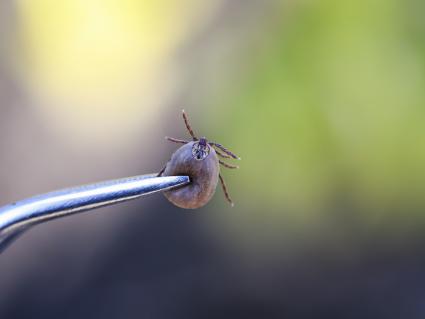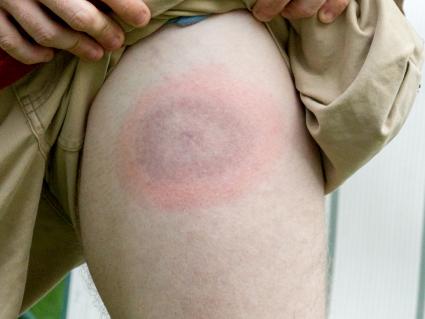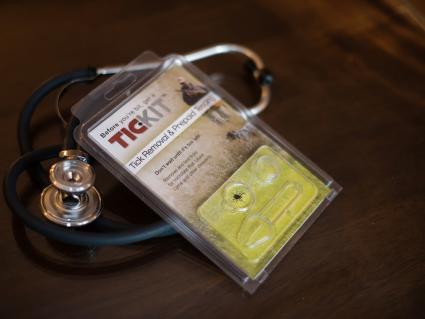Myth: A tick head needs to be removed completely if broken off in or under the skin.

According to the American Academy of Pediatrics 2020 and the Tick Bite, Schmitt Pediatric Guidelines 2020, it is recommended NOT to dig out the head of a tick if the tick breaks upon removal. It is felt that more trauma to the surrounding skin can lead to a higher risk of infection or cellulitis of the area. Leaving the tick head in does not increase the risk of contracting a tick borne illness. The body will shed skin layers and the tick debris as it heals
The Center for Disease Control (CDC) 2021, notes that if the tick were to break off leaving mouth parts in the skin, attempt to remove with tweezers if able. If unable to remove easily or it is under the skin, leave the area to heal on it’s own and the body will eventually expel the tick pieces. It is recommended to either cleanse the area with alcohol or soap and water.
Discussion-
Throughout my practice in mainstream medicine, it has been debated if a tick head should be removed completely or not, if the head broke off during removal. It has been my experience that there have been patients that insist a tick head need to be removed despite the depth of the head. There have been times that colleagues I have worked with have gone above and beyond to attempt to “dig out” the head or even as far as removing it with a scalpel. This leaving the area sore and inflamed in turn having higher risk for infection.
Tick Removal-
Ticks can be removed in several ways. Most easily tick twisters have become in favor as very easy to utilize and the tick comes off in entirety each time. Other methods include using light pressure with tweezers to pull off the tick. The National Center for Emerging Zoonic Infectious Disease, 2022 does not recommended to use Vaseline, ointment or nail polish to smother the tick, trying to burn the tick or scraping the area with a credit card.
About Heather Haslun, DNP, FNP-CRelated Blog Posts

Lyme Myth: Everyone with Lyme or a Tickborne Illness Needs to Avoid all Gluten and Dairy
Truth/Fact: Gluten sensitivities are extremely common, in part due to the pesticides used on conventionally grown wheat (called glyphosate or Roundup). This is also found on GMO crops such as corn and soy and can irritate the gut lining, weakening our immune system and having other impacts on our overall wellness. While many common food sensitivity tests are ineffective, an elimination diet along…Read the Post

Myth vs Fact: The Skinny on Cancer
Ahhh…spring is just around the corner! This month we are taking a look at common myths in healthcare, to decipher what is accurate, and what is, well, just simply not true.Read the Post

Myth: Bullseye Rash is Always Present in Lyme Disease
Many people believe that the bullseye rash, also known as erythema migrans (EM), is necessary for a Lyme disease diagnosis. While a bullseye rash is indeed clinically diagnostic, its absence cannot rule out either acute or chronic Lyme disease. However, a non-bullseye rash is more common...Read the Post

Remaining Vigilant while Transitioning Gracefully from Fall into Winter
One myth or misconception is that ticks are not present during the winter. After seeing so many ticks in late spring into early summer and then again, but maybe less so, at the beginning of the fall, we must still remain vigilant all year round. According to the SUNY Upstate Medical University website, “ticks don’t die in the winter, they go into dormancy around 35…Read the Post
Related Services

Lyme Disease
Lyme Disease Diagnosis and Treatment in Delmar NY and Burlington VT offices At the Stram Center we vow to continue our education on Lyme Disease research, stay up to date on the most effective testing and all the safe available therapies. Moreover, our years of experience in treating patients according to the whole person-integrative medicine approach allows us the most effective way to care…Lyme Disease





















